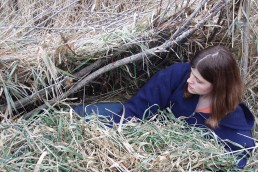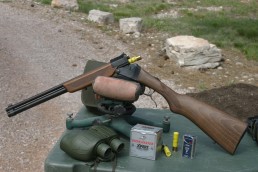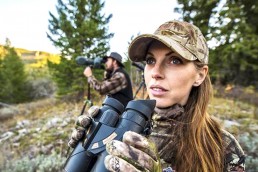Survival Sense: Outdoor Self-Reliance
SHARE THIS POST
Survival isn’t just for survivalists
Every now and then, as we enjoy the outdoors in our own adventurous way, something goes wrong. In the worst cases, it’s an incident that could become life threatening. How will we deal with whatever situation is thrown at us? What we do determines whether we are ultimately rescued—or merely recovered. Being self-reliant in the outdoors is founded in your sense of place and purpose. Self-reliance is more than knowing an assortment of survival “parlor tricks” or wielding the biggest survival knife. Surviving has to do more with being a resourceful MacGyver than a macho Rambo.
All outdoor survival situations and exercises in self-reliance begin with one fundamental asset. Positive Mental Attitude (PMA) is the driving force that energizes your will to endure and survive with hope and perseverance. Having a clear head, supported by positive thoughts, is the most critical tool in your survival kit. Practical skills are important, too! The ability to adapt to whatever your situation and environment have thrown at you means using several skills. Learn and practice these skills to help minimize your predicament—and maximize your options for rescue. At any time and in any environment, the wilderness can toss you a curve. How do you know which skill will be the most critical?
Dry first, warm second
It’s as important to know why you are are doing something as it is to know what to do. What’s the ultimate goal of a particular skill? Being proficient with flint and steel is key to starting a fire, true. Why is that important? Because being warm, dry and seen by rescuers is critical to your survival. Plus, being wet and cold quickly leads to hypothermia and death. Survival demands that you use your PMA and skill base to stay dry and warm.
Imagine this scenario: It’s late in the afternoon, you’re leisurely enjoying a day hike and there’s some nasty skies approaching from the southwest. You decide to hunker down to ride out the oncoming storm. You gather wood for a fire, but then spend the next hour trying to spark up a flame using that new flint/steel kit you bought just a few days earlier. Right around dusk, the weather takes a nosedive and the wind starts hurling raindrops at you. Now what? You don’t have a tent, so you don’t have a shelter. It won’t be long before you are cold and wet. Hello, hypothermia!
Use your physical and mental resources to first construct at least a temporary shelter, then tackle a fire. Being warm and dry by any means is the critical “why?” factor in this situation. A big pile of leaves under a makeshift roof serves your needs much better than sitting in the rain next to a cold, damp pile of uncooperative kindling.
Surviving is a process
Survive by using your self-reliance skills in a series, as a defined process. Don’t rely on random efforts. Carry out the “Seven Steps to Survival” in a specific sequence. Each step helps you towards achieving your ultimate goal of being rescued. Those seven steps are:
Are you enjoying this post?
You can be among the first to get the latest info on where to go, what to use and how to use it!
- Realize and accept that you are in trouble. Kick your PMA into action!
- Assess your situation. Are you injured? Is there imminent danger? What kind of resources are available?
- Create a shelter. You can always upgrade from a temporary shelter later.
- Create signals. Fire and smoke, in a series of three, or large letters or symbols in highly visible-from-above locations
- Find a safe water source. Know how to purify it before drinking.
- Eat. Food is fuel for both body and mind, but not essential for several days.
- Play. Yes, it’s important to relieve at least a little mental stress. Let your PMA downshift a bit, too. You will need it to be fresh and active to motivate you through your ordeal.
Within these seven steps are processes that can help each task succeed in optimizing your survival. Again, since you never know what skill sets you will need to rely upon, knowing the “why” behind each step can help your PMA mindset come up with alternative and perhaps innovative life-saving tasks.
Which skill to sharpen
The most practical skills are those that are basic in function, easy to execute and don’t cause you to expend a lot of valuable energy to accomplish. Practice skills at home that you feel may be most helpful. Before a problem arises, practice with any new or untried gear (flint/steel, or make-shift water filtration system). Work out the bugs in the process or application before your life might depend upon it to work in the field.
Likewise, choosing gear that can take on multiple tasks in a time of emergency (waterproof bags to haul/collect water; brightly-colored packs waved as signal flags) can extend your options when your situation turns south.
Even a short day trip into relatively tame backcountry can go bad should you injure yourself, have a major piece of gear fail or if Ma Nature develops a threatening attitude. Becoming self-reliant is vital when survival situations arise. Basic surival skills, coupled with a positive mental attitude, will help you achieve your optimum outcome–a life-saving rescue in any emergency situation.
For more reads that could save your life, pick up a copy of the US Air Force Survival Handbook.
MWO
SHARE THIS POST
Did you enjoy this post?
You can be among the first to get the latest info on where to go, what to use and how to use it!
MWO
We believe being outdoors is good. With more than 1,000 articles each year, MidWest Outdoors magazine is all about sharing outdoor experiences with you—where to go, what to use and how to use it… whether you’re close to home or on that trip of a lifetime.



